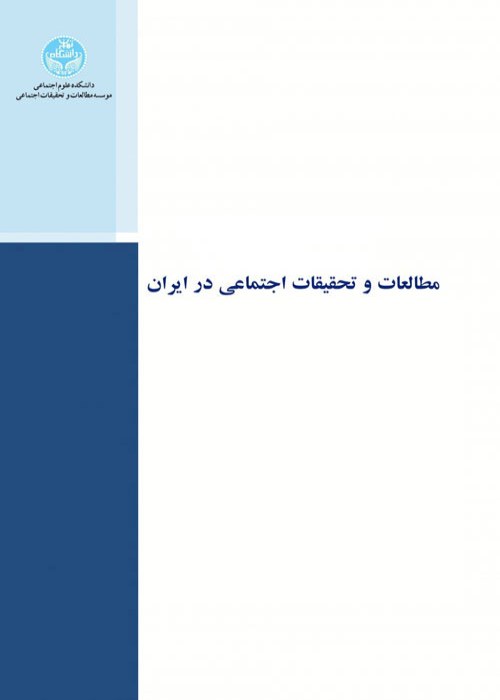Sociological study of the status of modern identity and religious identity among students of the University of Tehran
In this article, considering the field of study and gender, we seek to answer the question of how much identity is influenced by these two variables and what tendency is strengthened by strengthening each of the religious and modern identities? Based on the aspects related to the changes and implicit complexities in the status of identity, especially among students, the present study seeks to answer the main question of what is the relationship between the tendency towards modern values and religious identity among students.
The method of this research is correlation and its statistical population is all students enrolled in the second semester of 1397 in the faculties of technology, art and social sciences of the University of Tehran as three disciplines from three different fields in the mother university and the symbol of higher education in Iran. According to the size of the statistical population in different fields, 380 samples were selected by stratified random sampling. The data collection tool was a questionnaire whose validity was considered by the professors of social sciences and also the validity of the questionnaire through Cronbach's alpha test.
The results show that there is an inverse relationship between modern and religious identity, boys are more inclined to modern identity than girls. In further study, the difference between the means showed that there is a significant difference between the disciplines of the Faculty of Engineering and the disciplines of the Faculty of Arts in the tendency towards modern values. There is a significant difference between technical and art disciplines in the tendency towards religious values, so that technical students are more inclined towards the values of religious identity. This result is fully confirmed by the significance coefficient of 0.000. However, there is no significant difference between technical and social sciences students due to the fact that the significance coefficient is greater than 0.050. There is also a significant difference between art students and social science students, and social science students are more inclined to the values of religious identity. This result is reliable and generalizable to the statistical population due to the reliability coefficient of 0.001 which is less than 0.05. Interestingly, among students, technical tendencies compared to other students, tendency to modern values and religious values are more than other tendencies. The identity of students in these orientations is a combination and construction of the two mentioned values.
The quality of fluidity and interaction between the two categories of values has been internalized in students and can disrupt predictions of student behavior in future situations and also promise constructive interaction between two categories of resources within them. This article examines the formulation of identity as a fluid state under the influence of various sources that different people, especially student youths, who are in the most important stages of socialization. Numerous sources are very influential in shaping the identity of student youth. Although this article does not seek to create a dichotomy between modern identity and religious identity, it seeks to identify different formulations influenced by sources that have different weights among different groups of students. For this reason, in order to identify the elements and components affecting identity, these components can be distinguished from modern, national, religious, etc., but lived in practice and experience and based on the findings in the present study, it can be said that in general, these elements and components constitute the identity of students, so it cannot be reduced to one or two dimensions.
- حق عضویت دریافتی صرف حمایت از نشریات عضو و نگهداری، تکمیل و توسعه مگیران میشود.
- پرداخت حق اشتراک و دانلود مقالات اجازه بازنشر آن در سایر رسانههای چاپی و دیجیتال را به کاربر نمیدهد.


